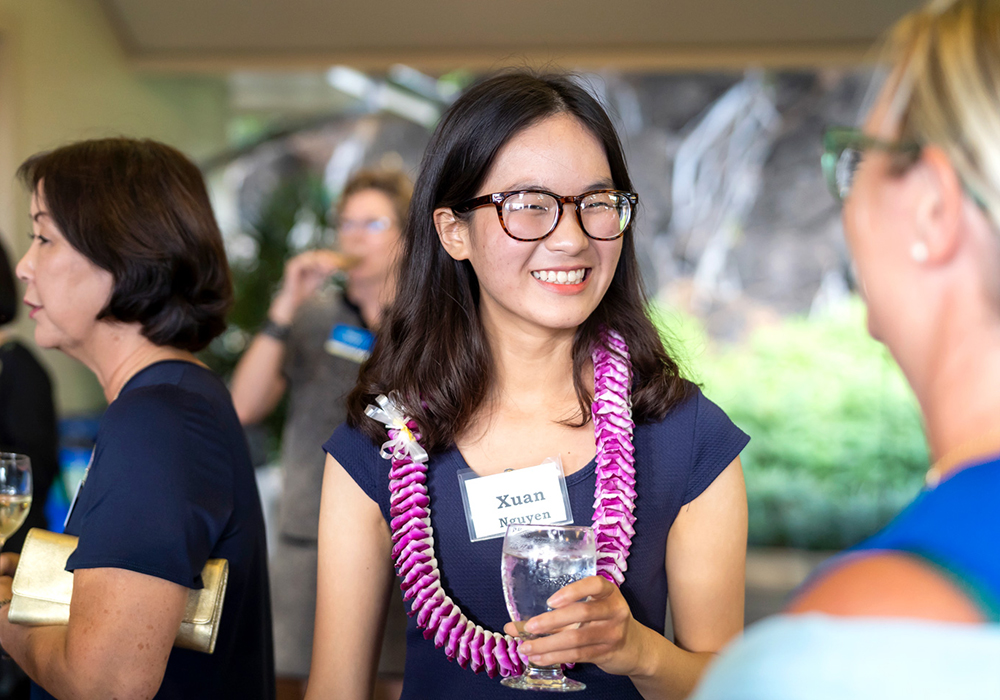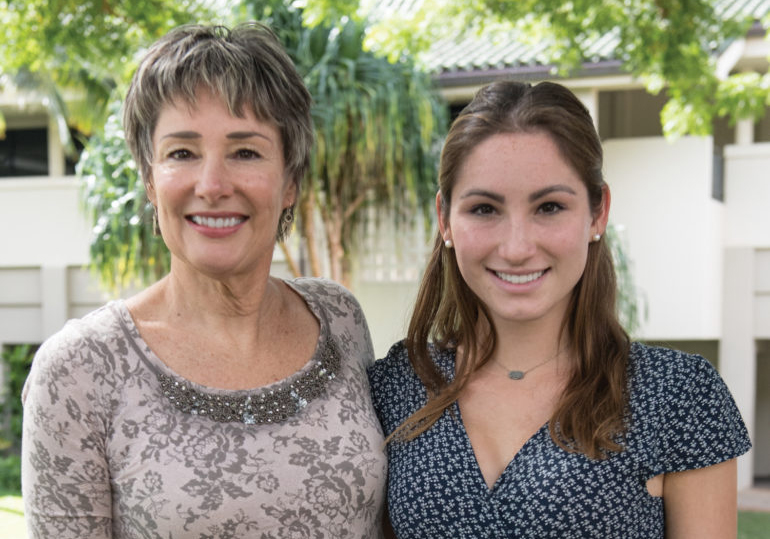
By Beverly Creamer
While the most profound impact of Punahou’s financial aid program is on the families who receive aid, increased access to a Punahou education has impacted the entire student body which is increasingly economically and culturally diverse.
This diversity increases the opportunity for all students to understand that even though they come from different backgrounds and circumstances, each student has a unique gift they bring to the Punahou community and, ultimately, to the world.
Over the last 24 years, President Jim Scott ’70 has passionately led the School’s commitment to ensure financial access to a Punahou education for every admitted and continuing student. “Financial aid is a key mechanism for cultivating the diverse learning community that will prepare all of our students for the changing realities of the global century, in which core skills like critical thinking, collaboration, problem-solving and social engagement are fostered by the ability to leverage multiple voices and perspectives,” says Scott.
Families across the state have benefited from the School’s inclusion, openness and enlightened opportunities, that have launched careers, sent graduates on worthy endeavors around the globe, and made Punahou a warm and welcoming place.
For single mother Karen Boyer, seeing her daughter Korynn Grenert ’17 grow and thrive at Punahou during her high-school years, despite the family’s financial challenges, was more than she could have imagined.
This year alone, $6.9 million was awarded for financial aid, and helped 716 students – or 19 percent of the student body. On average this year, students and their families who applied for aid received $9,606.
Learn more about applying for financial aid at
www.punahou.edu/financialaid
Back in 1992, Daniel Makainai ’97 was one of those students. He clearly remembers the day when his extended family gathered to talk about applying to private school for the boy who was heading into eighth grade but wasn’t being challenged enough in public school, and how the school at the top of their list would become like another family.
While Grenert and Makainai are personal examples of what financial assistance can mean for an individual’s future, they are not alone in seeing the world open to them. For thousands more of the young people who enter Punahou’s doors, the support provided by financial aid has created opportunities they may never have encountered otherwise.
Additionally, since 2016, supplemental aid has been available to all families to pay for important extras, such as school trips, that enhance learning opportunities and ensure that students benefit from the full variety of a Punahou experience.
To look deeper into the impact financial aid has on the learning environment and on the future of our community, the following stories highlight how lives have been changed, and a robust financial aid program is a commitment to all students at Punahou.
“Financial aid is a key mechanism for cultivating the diverse learning community that will prepare all of our students for the changing realities of the global century.”
President Jim Scott ’70
The Gift of the Extended Family
By Susan Nakamura
Nestled on the slopes of Diamond Head, the University of Hawai’i Kapi’olani Community College campus is usually a bustling oasis of students and faculty. On this particular day, a state holiday, the campus is serenely quiet, but not in the office of Karen Boyer. As department chair of KCC’s Nursing Program and a professor, she is busy at work — scheduling visits to clinical facilities, meeting with counselors and preparing notes for her classroom. In addition to a highly responsible job, Boyer is also a single parent to alumna Korynn Grenert ’17 and Kevin Grenert, a 14-year-old student at Assets School.
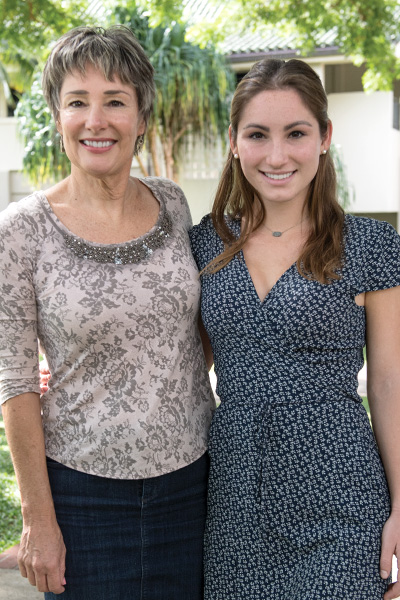
Like her mom, Korynn is a driven and determined young woman. She entered Punahou in the ninth grade after attending Noelani Elementary and Kaimuki Middle School. Boyer was already looking at public high schools that would be a good fit when Korynn expressed her desire to apply to Punahou. “We knew several Punahou families from our church and community, and they always shared their deep appreciation for the quality of education and breadth of opportunities,” says Boyer. She was confident that Korynn’s good grades and work ethic would give her an edge, but it was the tuition that worried her. Fortunately, Korynn was accepted and her family was able to secure financial assistance.
The academic rigor of Punahou was the challenge Korynn needed and she worked hard at it, being a strong role model for Kevin, who was struggling with language processing challenges. She also took advantage of job opportunities on campus, working as a teacher’s assistant during two summers with the Reading for Success program and in the College Counseling department for three years, where she received valuable mentoring from the staff.
“As I look back at her four years at Punahou, I believe what really helped Korynn mature was the navigating that she had to learn. She had to figure things out by staying on top of her schedule and asking for help. In her first year, she got confused with the A – F cycle schedule and missed one of her classes. It never happened again,” recalls Boyer. “The access and connection Korynn had with Punahou teachers and faculty, like Deans Lisa Stewart and Ron Gould, and Associate Director of College Counseling Darlee Kishimoto, was one of the most important gifts to our family. We needed these adults to advocate for us and help Korynn feel connected and valued.”
In 2015, Boyer was hit with an unexpected financial situation and painfully considered pulling her children out of private school. Boyer was able to get the added assistance she urgently needed from Punahou’s financial aid office.
This fall, Korynn began her double major studies in political science and natural resources and environmental management at the University of Hawai’i – Manoa, where she was awarded the prestigious Chancellor’s Scholarship, which supports students with a record of outstanding academic achievement and covers tuition for four years.
With some of the most trying years behind her, Boyer shares, “We’ve made many sacrifices and have gone through very tough family and financial situations, but you emerge on the other side. When you have a job you enjoy, good health, great kids and a little help along the way, you know it’s all going to be okay.”
Paying It Forward
By Beverly Creamer
When Daniel “Danny” Makainai ’97 entered Punahou in 1992, he was a shy eighth-grader afraid to talk to those he didn’t know, and uncertain about moving from public school to a tough, top private school.
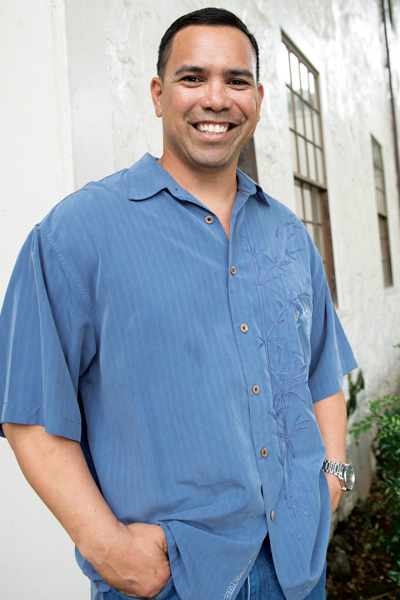
Five years later, when he graduated and was about to launch a music career, he was a confident, outgoing young man with a hopeful and powerful future that has included mentoring hundreds of young men in athletics – and life – who were much like himself when he was first at Punahou.
Without that experience, and the financial aid from eighth grade through senior year that made it possible, he can’t even imagine what his life would be like now.
“Punahou took that chance on me and I will be forever grateful,” says Makainai whose music career right after high school included winning Na Hoku awards with his group Soulfree, and many guest TV appearances. “There were teachers that reached out and guided me … It built me a lot as a person and I want to pass that down to my kids and the kids I coach. I know at any time Punahou could have cut ties with me, but they saw me through. The whole ‘ohana vibe there, that’s what helped catch me up in academics.”
Though it was challenging at first, Makainai thrived at Punahou, built life-long friendships, and still turns to one of his teachers as a mentor, even as he mentors the dozens of young people who nowadays see his own home as a gathering place and are inspired by his stories of challenging yourself. All of these things were cemented for him at Punahou. And, maybe because of the School’s example of inclusion and acceptance, Makainai has gone on to pay it forward.
It was cultural advisor, the late Dave Eldredge ’49, who told him “Always be proud of who you are.” Coaches nurtured his football career – even though at 5-foot-8 inches, and just 150 pounds, Makainai was considered small for the team. Coach and teacher Mike Pavich also worked with him on math, and was always there to listen. “He would reach out to me a lot, and if I had any problems I was ashamed of I would go and talk to him,” says Makainai. “I could always find coaches and teachers to confide in.”
“The homework, the atmosphere, everything was a big change for me. I had a lot of growing up to do and Punahou helped me do it. My biggest thing now is trying to help other kids, and give them my life experiences.”
Danny Makainai ’97
While a student, it was teacher Lynn Kimura ’81 Kunishige who waited all day on a Saturday for him to arrive for a tutoring session. Instead of scolding him – which is what he expected when he was six hours late – she greeted him with enthusiasm. As she helped him understand how to put together an essay, she also explained there are many ways to express oneself through writing.
“I think that did something,” Makainai says. “It sparked a fire.”
Makainai began writing more than good papers. He started writing music. The two albums he recorded, mentored by friends in the band Natural Vibrations, were primarily his own compositions – music inspired by the acceptance he found at Punahou, his Christian spirit, and his love of a contemporary reggae beat.
But there were also many more teachers, students and advisors who encouraged his growth and self-confidence, and nurtured his talent. It was the School that brought him together with another student, Pomaika’i Keawe ’99 Lyman, the granddaughter of Genoa Keawe, for Hawaiian music jam sessions that built his confidence as a musician and singer. And it was the School that gave him another sense of a larger, but also loving and supportive family, and which inspired him to take what he had learned and give it back to other students struggling to find themselves.
Even with a growing family of his own today, and a busy career helping build the electrical side of Mana, a construction company created by a friend, Makainai makes time to coach athletics at his son’s school and with an after-school league for young people from the wider community. Many of those young men are now in college and finding their own successful paths.
And he often tells the young athletes he coaches on the “Big Boys League” – now called “Junior Prep Sports” – to never use the word “impossible.”
“Anything is possible,” he tells them. “It just might take a little longer. If you want to do it, you’re going to do it.”
Teaching Compassion and Empathy Through Diversity
By Beverly Creamer
In her Ethics class, English teacher and Academy Department chair Holly Greenwell ’86 brings profound questions to her students and has seen a lasting impact in the way they answer and how their thinking is affected. “The focus is on cultural, social and spiritual ethics, so often we end up talking about human circumstances,” says Greenwell. “We talk a lot about ‘What is the right way to act,’ ‘What does a good person look like?’ ‘What is it that makes a person great? Is it wealth, family, where they come from, their culture?'”
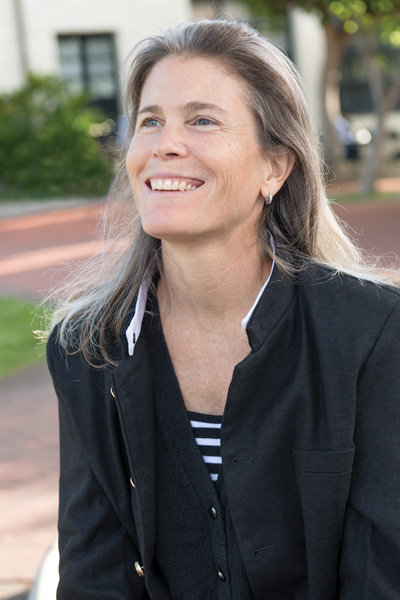
“One day we were talking about where power comes from. Does it come from your character? From financial resources? Does being rich automatically make you a good person?’ The room immediately went ‘NOOOOOO … .’ It was so obvious. It was almost like a dumb question.”
While this is just one anecdote of how the environment of compassion and acceptance is evolving at Punahou, it’s indicative of how the School’s attention to greater diversity on campus is broadening its message, and its reach.
Increasingly, Punahou has framed its educational mission around serving an ever-expanding mix of students from a wide variety of backgrounds, cultures, geographical areas and socioeconomic conditions. That commitment has tracked the tremendous growth in need-based financial aid, with its ability to put students on an equal educational footing.
That very diversity is enriching the learning environment, creating lasting bonds across socioeconomic and cultural divides, and continuing to strengthen a campus alive with expanded possibilities for its students and for their creative, thriving community.
Over the last two decades, there has been a renewed and determined commitment of financial resources dedicated to opening the School to talented students from all walks of life. And with financial aid blind to a student’s identity, not even teachers know who is receiving assistance.
There may not be huge “aha! moments” when the importance of learning within a diverse community makes an impact. But as young people learn and study together, and come to like, respect and depend upon one another, differences wash away as trust and friendship are built.
“Kids are more aware of the reality of people from different circumstances. They have a greater sense of respect for those in the class who may not have the same benefits they’ve had.”
Holly Greenwell ’86
From her vantage point teaching over the past 15 years, Greenwell has clearly seen a changing landscape of understanding among students.
“Kids are more aware of the reality of people from different circumstances,” she says. “They have a greater sense of respect for those in the class who may not have the same benefits they’ve had.”
Greenwell and her class did a unit on “The Bible as Literature,” with students learning about parables as a tool for teaching as well as learning social and spiritual ethics. “Several students in the class wrote parables about their experiences living through difficult financial times with their families,” she says, “and then bravely read their parables to a larger audience of their peers in Chapel, receiving tremendous cheers of support.”
With their parables, says Greenwell, “these students helped many of their classmates understand and feel compassion for childhood experiences that may be very different from their own.”
That deeper understanding, with its growth of empathy for others, begins even in the earliest elementary grades at Punahou.
“Because we have financial aid, students come from all over the island. And when they start talking about different places, it brings different perspectives.”
John Nagel ’90
In kindergarten and first grade, students study China and the Chinese language; by second grade the curriculum involves studying the culture of islands, including Japan, as well as having each student do a research project on one of their own cultural backgrounds. “As early as second grade students are able to appreciate each others’ backgrounds,” says Dean Julie Crane-Cory who, with Dean John Nagel ’90, oversees grades 2 – 5.
By third grade there’s immersion in the Hawaiian culture, with a full year of study that also includes language; and by fourth grade there’s a focus on diversity of all types, and, most recently, an exchange program with fourth-graders from Japan.
Nagel recalls how one classroom exercise asks students to study their own neighborhoods, and then share the findings with their class. “We hear all the time about the differences between town and country,” he says. “Because we have financial aid, students come from all over the island. And when they start talking about different places, it brings different perspectives.”
“It’s important in our world to be mindful of all of these differences and really celebrate them,” agrees Crane-Cory. “It creates empathy, and adds to the flavor of our school culture, knowing that we’re each so vastly different from one another, and yet we can all learn from each other.”
Beverly Creamer is a freelance writer and mother to Jennifer Burris ’00 Staton and Erin Burris ’04 Bartlett.
“More importantly, we believe that financial aid benefits everyone within a school. Social, cultural, intellectual and economic diversity enriches the educational experience for all students.”
– Jim Scott ’70
Affording a Punahou Education
President Jim Scott ’70 has consistently emphasized the importance of a robust financial aid program to increase the accessibility of a Punahou education and to build a diverse student body.
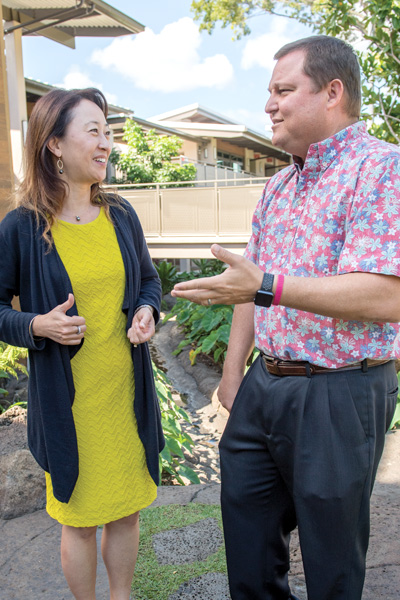
Under Scott’s leadership, the School has successfully increased its annual financial aid budget from $1 million in 1994 to $6.9 million in 2017. The growth in available funding for financial aid presents a unique opportunity for the School to educate the larger community of Hawai’i that a Punahou education can be affordable if families have a demonstrated financial need.
This school year, 19.2 percent of enrolled students are receiving aid – an increase of 5.2 percent over five years ago. By 2020, the School hopes to extend assistance to at least 20 percent of the student body – an objective that Scott has made a priority during his tenure.
This upward trend is due in part to an ambitious goal set at the start of the Ku’u Punahou campaign to add $40 million to Punahou’s financial aid endowment. In addition, the recently completed Changing Lives Challenge (see page 20) provided an opportunity for donors to maximize their giving capacity through an anonymous donor’s gift of matching funds. Punahou’s financial aid program is funded through philanthropy so the success of the program is directly impacted by the generosity of the Punahou community.
“Financial aid is a tool that enables Punahou to attract and admit bright, motivated and talented students who will take full advantage of Punahou’s opportunities and who will add value to the School community,” President Scott has said. “More importantly, we believe that financial aid benefits everyone within a school. Social, cultural, intellectual and economic diversity enriches the educational experience for all students.”
Hear from two graduates from the Class of 2017 about the impact financial aid has had on their lives…
Support Beyond Tuition
By Rachel Breitweser ’03
Offered since 2016, supplemental financial aid provides assistance for school-related expenses that are not reflected in tuition. “Supplemental financial aid allows for all Punahou students to access a broad range of curricular experiences outside of the classroom that align with the Aims of a Punahou Education,” explained James Kakos, Academy assistant principal. The aid is available to help cover individual student’s costs to participate in opportunities such as summer school, class trips, athletic travel, international travel, annual performances and band camp.
For the Punahou marching band, practicing as a complete group is vital to their success, which is why every band member is encouraged to attend band camp during the summer. During the intensive two-week camp, students polish their performance skills, musicianship and choreography, of which each of the 150 individual students is a crucial part. One week of camp is spent on Hawai’i Island, and requires students to pay for their travel and food. For some families, this added expense is difficult to cover, and that’s where the supplemental aid comes into play.
Supplemental financial aid is need-based aid for families who qualify and who are willing to be responsible for a portion of the costs. All families can apply for the aid, regardless of whether they are receiving tuition financial aid or not.
“If you’re part of a group, club or team, the opportunity to participate in the complete experience should be available to everyone, regardless of a family’s financial situation,” says Director of Financial Aid Jennifer Hong ’92.

